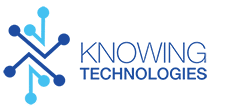Written by Jim Puccetti, Director of Teacher Development and Instructional Design
As a high school teacher for over a decade, I have experienced some excellent conferences and workshops all around the country that focused on technology integration. One of my favorite faculty professional development experiences has been the national Cue Conference, held annually in Palm Springs, CA. It is the largest and oldest education technology conference in California, and amongst the largest in the country. From their highly-regarded keynote speakers (Sir Ken Robinson was one of my favorites in 2013), and high volume of breakout sessions, it is an ideal environment to be surrounded by talented educators, sharing best practices and great ideas with their like-minded colleagues.
However, I have often found myself frustrated with components of these large-scale conferences. The quantity of information that is shared can be overwhelming and difficult to digest on your own. In addition, the breakout sessions tend to be full of energetic teachers who are excited to learn a new tool or set of tools. But that enthusiasm can quickly fade when a small group of teachers, who are struggling to keep up, begin to consume the presenter’s attention. I remember being in a Google Apps for Education workshop, hoping to learn new ways to integrate these tools into my courses. Unfortunately, the value of this workshop quickly diminished when four teachers peppered the presenter with question after question, unintentionally dominating the session. I looked around the room and noticed most of the teachers in the room were completely disengaged. They were either surfing the web, grading papers, or perhaps simply thinking about which session they will escape to next.
“I have often found myself frustrated with components of these large-scale conferences.”
This can be the unfortunate reality when bringing a large group of people with dissimilar skills and backgrounds together to learn a new technology. I have always valued when conference organizers construct sessions at varying levels (beginner, intermediate, and advanced), and in smaller groups. Those in attendance find themselves surrounded with more people that have similar skill sets to them. But what would be even better than that would be constructing a learning environment where teachers could receive individualized attention, and the sessions could be tailored to the teachers themselves. There would be special attention placed on each teacher’s background and skill set.
The most meaningful learning experiences have occurred when I have partnered up with an instructional technology specialist. This one-to-one environment was extremely efficient and effective as it helped me to quickly develop my skills with certain technologies. Awhile back, I was in need of a brief tutorial on how to use the Google Apps Script Doctopus. Since I already had a basic understanding of its functionality, I knew I only needed a brief walkthrough of the tool. Instead of waiting through a long introductory presentation of the tool or rounds of questioning, I was able to quickly meet with the specialist and get the support I needed. The experience reminded me the value of individualized attention.
Finding a healthy balance between the conferences and personalized experiences would be ideal. This hybrid model has the power to provide the support and guidance to meet the needs of an entire school faculty and in turn provide them with the confidence to successfully integrate new technologies into their courses.




